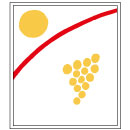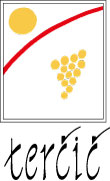Our vineyard work
We are the custodians of the land from which our grapes are born.
WINTER
As the long nights approach and the temperature drops, we see the first changes in nature. The leaves change colour, a sign that all the nutrients of the vine are returning to the roots and the vines have begun their period of hibernation. During these months, from December to the end of February, manual pruning is carried out. No two vines are the same; each is unique. When pruning, we must consider every individual vine and decide where to make the main cut, a cut which is critical as the healthy growth and production of grapes will depend on it.
The vines are trained on the guyot system, which means that once the pruning is finished, we go back through the vineyard and tie the cane to the fruiting wire, ready for the spring. All these operations are carried out by us, by hand. The pruned shoots are placed in the rows and then shredded. During the month of March, any damaged posts and wires are replaced, to ensure the upright growth of the vines.
SPRING
In mid-March, the days grow longer and the temperatures begin to rise. Nature awakens, spring has arrived. The wind sighs gently, the water in the streams murmur. The trees are in leaf and flowers perfume the air. The vine has begun to breathe again. This awakening can be seen from the tears that come from the pruning cuts, the sign that the roots have resumed their work. The buds begin to swell and the first shoots begin to appear.
The months of May and June are very intense in the vineyard. We need to remove the excess and non-fruit bearing shoots which drain energy from the fruit bearing ones. This operation, called desuckering, is precise and meticulous work done manually, vine by vine. It allows us to have healthy and balanced plants, with strong shoots and healthy bunches. As the season continues, the shoots are placed inside the wires so that they can grow vertically and build a canopy which will allow the vines to capture the sun’s energy.
In June, if you walk in the vineyard, there is a delightful fragrance in the air. The time has come for flowering; a magical, but very delicate moment, because it is important that all the flowers bloom at the same time, so that the future grapes ripen together.
The first shoot trimming also takes place in this period. Trimming makes sure the vines do not become too dense and leafy, allowing aeration and the penetration of sunlight into the canopy. Cutting the apical part of the shoots limits vertical growth and ensures the vines concentrate their energy on ripening the grapes rather than on unnecessary vegetative growth.
SUMMER
After flowering, the berries begin to form. At first they look like little peppercorns. At this time, it is important to thin out the leaves, so we remove any that are grouped around the bunches of grapes on the east-facing side of the vines. We do not touch the leaves on the western side, so they are protected from the harsh rays of the afternoon sun. Removing leaves also helps to ensure good air flow around the bunches.
After the leaf thinning, we move on to bunch thinning. This is the green harvest, which consists of removing excess bunches so that we are left with just the right number of healthy, balanced ones. These will benefit from more intense ripening and will be more concentrated. These extremely important jobs are carried out by us and by our selected workers. During these months, the desuckering work on the trunk and foot of the vine continues, as well as the trimming of shoot tips.
In August, the grapes skins begin to change colour, the phase called veraison. In a few days, the grapes will begin to ripen, as sugar accumulates and acidity decreases. In August, we also witness lignification. This is when the shoots become hard and woody, and turn from green to brown. No more work is done on the vines from now on. In the hills, it is necessary to fence the vineyards with electric wires to protect them from wild boars and deer which would otherwise feast on the grapes.
AUTUMN
During the month of August, the grapes become gradually softer and sweeter as we observe the ripening progress. It is very important for us to wait for the perfect moment to begin the harvest. Once the grapes have reached the desired degree of ripeness, we begin to pick. For us, there are three key indicators of ripeness. The first is technical, which consists in the balance between sugars and acidity. During the summer, the sugars increase and acidity decreases. Sugars must reach a certain level in order for us to have the desired ripeness, and acidity is important because it contributes to the freshness and balance of our wines, as well as the ageing potential. The second indicator is phenolic ripeness, very important for our red grape, Merlot. Here it is important to achieve the right quality of tannin, which we will find later in the bottle.
The final test is organoleptic, which involves tasting the grapes to check the balance of aroma and flavour. Here we look for the sweetness of the pulp and the crunchiness of the skin.
In this period, we undertake numerous analyses to determine the ideal moment in which to start the harvest. We aim for the optimal level of all three types of ripeness in each of the 14 plots of the property.
Our harvest lasts about three weeks. Towards the end of this period, the leaves begin to change colour, white grape vineyards turning from green to yellow, the merlot from green to red. It is very important to enter the vineyards now and uproot any diseased vines so that the disease does not spread.
When the temperatures begin to drop and the leaves fall, we are approaching winter, and the vines rest at the end of their annual cycle.




